When it comes to the compact luxury SUV segment, the competition is fierce. The BMW X1 and Mercedes GLA are two of the most appealing offerings in this category. Both vehicles bring a distinct blend of performance, comfort, and technology, making the choice between them rather complex. In this article, we will dive into a detailed comparison of these two contenders, evaluating their technical specifications, innovations, and overall driving experience.
BMW X1 vs Mercedes GLA – Differences & prices compared
Everyday use, family trips or long-distance drives – here’s where the differences show.
Discover whether BMW X1 or Mercedes GLA fits your lifestyle better.
Design and Dimensions
The BMW X1 boasts a robust SUV silhouette with dimensions measuring approximately 4500 mm in length and 1845 mm in width. This design translates into a roomy interior, where both driver and passengers enjoy ample space. In contrast, the Mercedes GLA, while slightly shorter at 4412 mm in length, offers a sleek and stylish profile. However, it maintains a competitive width of around 1834 mm. Despite these differences, both vehicles provide a comfortable seating arrangement for five occupants.
Engine Variants and Performance
Under the hood, the BMW X1 offers a diverse range of engine options. The lineup includes diesel and petrol engines, as well as mild-hybrid and plug-in hybrid variants. With power outputs varying from 136 hp to an exhilarating 326 hp, the X1 caters to a range of driving preferences. Acceleration from 0-100 km/h can be achieved in as little as 5.4 seconds, showcasing its sporty edge.
On the other hand, the Mercedes GLA presents a similarly varied engine lineup, including petrol, diesel, and hybrid models. Power outputs span from 116 hp to a substantial 421 hp in the high-performance AMG variant. The GLA's acceleration capabilities are impressive as well, with the top models achieving 0-100 km/h in just 4.3 seconds, signaling its performance potential.
Fuel Efficiency and Eco-Friendliness
Fuel efficiency is critical for many buyers in this segment. The BMW X1 showcases commendable fuel consumption rates ranging from 4.6 to 7.7 L/100km, depending on the selected engine. The diesel models, in particular, excel in this area, offering lower CO2 emissions and higher efficiency.
The Mercedes GLA, while slightly less economical in its base models, offers competitive fuel consumption as well, ranging from 5.4 to 9.5 L/100km. The hybrid variants provide an eco-friendlier option, with an electric range of up to 70 km, thanks to a battery capacity of 12.9 kWh, compared to the X1's 14.2 kWh which enables an electric range of 83 km.
Technological Innovations
Technological features play a significant role in the appeal of both SUVs. The BMW X1 incorporates the latest iDrive infotainment system, equipped with seamless smartphone integration, voice control, and an intuitive touch display. Additionally, advanced driver assistance systems are prevalent across the range, enhancing safety and driving ease.
In comparison, the Mercedes GLA is outfitted with the MBUX (Mercedes-Benz User Experience) system. This feature-rich interface supports advanced voice control, augmented reality navigation, and cutting-edge connectivity options. The GLA also excels in safety with its array of autonomous driving features and active safety systems.
Conclusion: Which SUV Reigns Supreme?
Choosing between the BMW X1 and Mercedes GLA ultimately depends on personal preferences and driving style. The X1 offers a more varied powertrain lineup and generous trunk capacity, while the GLA impresses with its high-performance variants and tech-savvy features. Both vehicles provide a luxurious experience, but each appeals to different aspects of the modern driver's desires.
Whether you lean towards the sporty nature of the BMW X1 or the innovative luxuries of the Mercedes GLA, you are set to enjoy one of the finest offerings in the compact SUV segment. A test drive will further illuminate the dynamic differences, driving home the right choice for your lifestyle.
Here’s where it gets real: The technical differences in detail
Costs and Efficiency:
Price and efficiency are key factors when choosing a car – and this is often where the real differences emerge.
BMW X1 has a barely noticeable advantage in terms of price – it starts at 38200 £, while the Mercedes GLA costs 38800 £. That’s a price difference of around 608 £.
Fuel consumption also shows a difference: BMW X1 manages with 2.50 L and is therefore a bit more efficient than the Mercedes GLA with 2.90 L. The difference is about 0.40 L per 100 km.
As for range, the BMW X1 performs slight better – achieving up to 81 km, about 7 km more than the Mercedes GLA.
Engine and Performance:
Power, torque and acceleration say a lot about how a car feels on the road. This is where you see which model delivers more driving dynamics.
When it comes to engine power, the Mercedes GLA has a noticeable edge – offering 421 HP compared to 326 HP. That’s roughly 95 HP more horsepower.
In acceleration from 0 to 100 km/h, the Mercedes GLA is evident quicker – completing the sprint in 4.30 s, while the BMW X1 takes 5.40 s. That’s about 1.10 s faster.
In terms of top speed, the Mercedes GLA performs minimal better – reaching 270 km/h, while the BMW X1 tops out at 250 km/h. The difference is around 20 km/h.
There’s also a difference in torque: Mercedes GLA pulls hardly perceptible stronger with 500 Nm compared to 477 Nm. That’s about 23 Nm difference.
Space and Everyday Use:
Beyond pure performance, interior space and usability matter most in daily life. This is where you see which car is more practical and versatile.
Both vehicles offer seating for 5 people.
In curb weight, Mercedes GLA is minimal lighter – 1570 kg compared to 1575 kg. The difference is around 5 kg.
In terms of boot space, the BMW X1 offers a bit more room – 540 L compared to 435 L. That’s a difference of about 105 L.
In maximum load capacity, the BMW X1 performs slightly better – up to 1600 L, which is about 170 L more than the Mercedes GLA.
Maximum payload is identical – both can carry up to 500 kg.
Who comes out on top?
Overall, the BMW X1 shows itself to be won narrowly and secures the title of DriveDuel Champion.
It convinces with the more balanced overall package and proves to be the more versatile choice for everyday use.
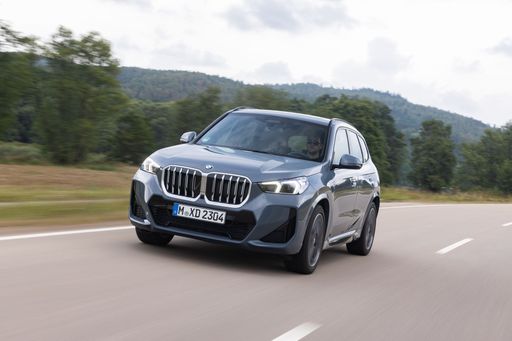 @ BMW Group Press
@ BMW Group Press
BMW X1
BMW X1
The BMW X1 brings a premium feel to compact crossover life, wrapping practical space and agile handling into a tidy, upscale package. It’s ideal for buyers who want BMW driving dynamics without the bulk, offering everyday comfort and a few clever tricks to keep the commute interesting.
details @ BMW Group Press
@ BMW Group Press
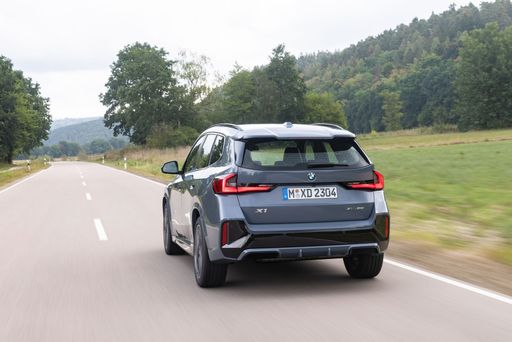 @ BMW Group Press
@ BMW Group Press
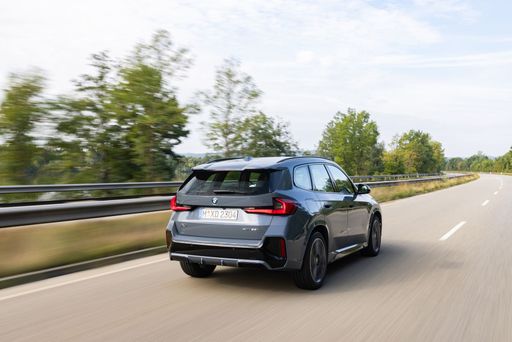 @ BMW Group Press
@ BMW Group Press
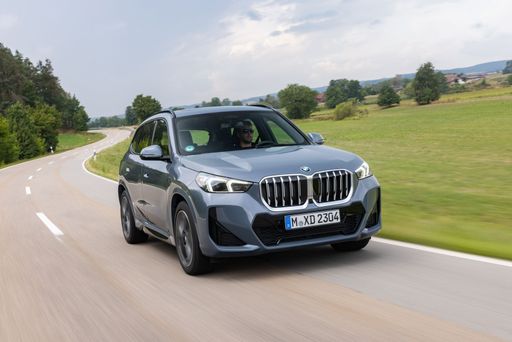 @ BMW Group Press
@ BMW Group Press
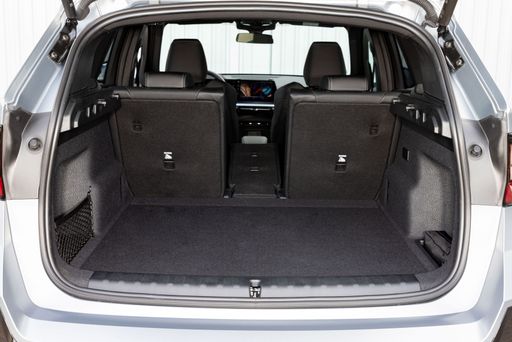 @ BMW Group Press
@ BMW Group Press
Mercedes GLA
The Mercedes GLA blends Mercedes style with compact crossover practicality, looking sharper than its size suggests while still feeling purposeful around town. Inside it serves up premium materials and tech-forward ergonomics, and the composed ride makes it an appealing pick for buyers who want luxury wrapped in a city-friendly package with a wink of adventurous spirit.
details @ Mercedes-Benz Group Media
@ Mercedes-Benz Group Media
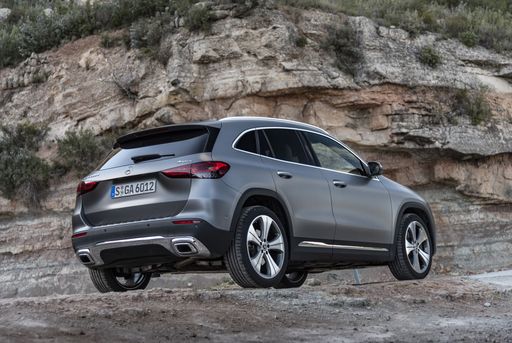 @ Mercedes-Benz Group Media
@ Mercedes-Benz Group Media
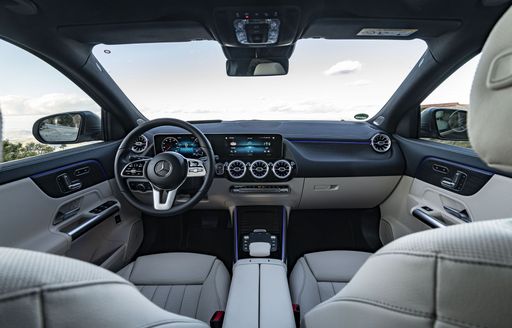 @ Mercedes-Benz Group Media
@ Mercedes-Benz Group Media
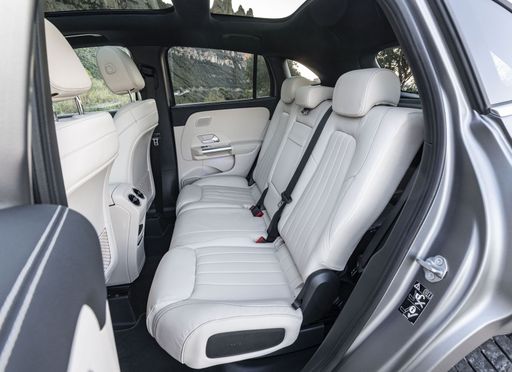 @ Mercedes-Benz Group Media
@ Mercedes-Benz Group Media
 @ BMW Group Press
@ BMW Group Press
|
 @ Mercedes-Benz Group Media
@ Mercedes-Benz Group Media
|
|
|
|
Costs and Consumption |
|
|---|---|
|
Price
38200 - 55500 £
|
Price
38800 - 75300 £
|
|
Consumption L/100km
2.5 - 7.7 L
|
Consumption L/100km
2.9 - 9.5 L
|
|
Consumption kWh/100km
-
|
Consumption kWh/100km
-
|
|
Electric Range
81 km
|
Electric Range
74 km
|
|
Battery Capacity
14.20 kWh
|
Battery Capacity
12.90 kWh
|
|
co2
57 - 175 g/km
|
co2
66 - 216 g/km
|
|
Fuel tank capacity
47 - 54 L
|
Fuel tank capacity
35 - 51 L
|
Dimensions and Body |
|
|---|---|
|
Body Type
SUV
|
Body Type
SUV
|
|
Seats
5
|
Seats
5
|
|
Doors
5
|
Doors
5
|
|
Curb weight
1575 - 1935 kg
|
Curb weight
1570 - 1810 kg
|
|
Trunk capacity
490 - 540 L
|
Trunk capacity
385 - 435 L
|
|
Length
4500 - 4505 mm
|
Length
4412 - 4443 mm
|
|
Width
1845 mm
|
Width
1834 - 1849 mm
|
|
Height
1622 - 1642 mm
|
Height
1590 - 1616 mm
|
|
Max trunk capacity
1495 - 1600 L
|
Max trunk capacity
1385 - 1430 L
|
|
Payload
490 - 500 kg
|
Payload
480 - 500 kg
|
Engine and Performance |
|
|---|---|
|
Engine Type
Diesel MHEV, Petrol MHEV, Petrol, Diesel, Plugin Hybrid
|
Engine Type
Plugin Hybrid, Petrol MHEV, Diesel, Petrol
|
|
Transmission
Automatic
|
Transmission
Automatic
|
|
Transmission Detail
Dual-Clutch Automatic
|
Transmission Detail
Dual-Clutch Automatic
|
|
Drive Type
Front-Wheel Drive, All-Wheel Drive
|
Drive Type
Front-Wheel Drive, All-Wheel Drive
|
|
Power HP
136 - 326 HP
|
Power HP
116 - 421 HP
|
|
Acceleration 0-100km/h
5.4 - 9.2 s
|
Acceleration 0-100km/h
4.3 - 11 s
|
|
Max Speed
190 - 250 km/h
|
Max Speed
190 - 270 km/h
|
|
Torque
230 - 477 Nm
|
Torque
230 - 500 Nm
|
|
Number of Cylinders
3 - 4
|
Number of Cylinders
4
|
|
Power kW
100 - 240 kW
|
Power kW
85 - 310 kW
|
|
Engine capacity
1499 - 1998 cm3
|
Engine capacity
1332 - 1991 cm3
|
General |
|
|---|---|
|
Model Year
2024 - 2025
|
Model Year
2024 - 2025
|
|
CO2 Efficiency Class
D, E, F, B
|
CO2 Efficiency Class
B, E, F, G
|
|
Brand
BMW
|
Brand
Mercedes-Benz
|
Is the BMW X1 offered with different drivetrains?
The BMW X1 is offered with Front-Wheel Drive or All-Wheel Drive.
The prices and data displayed are estimates based on German list prices and may vary by country. This information is not legally binding.
